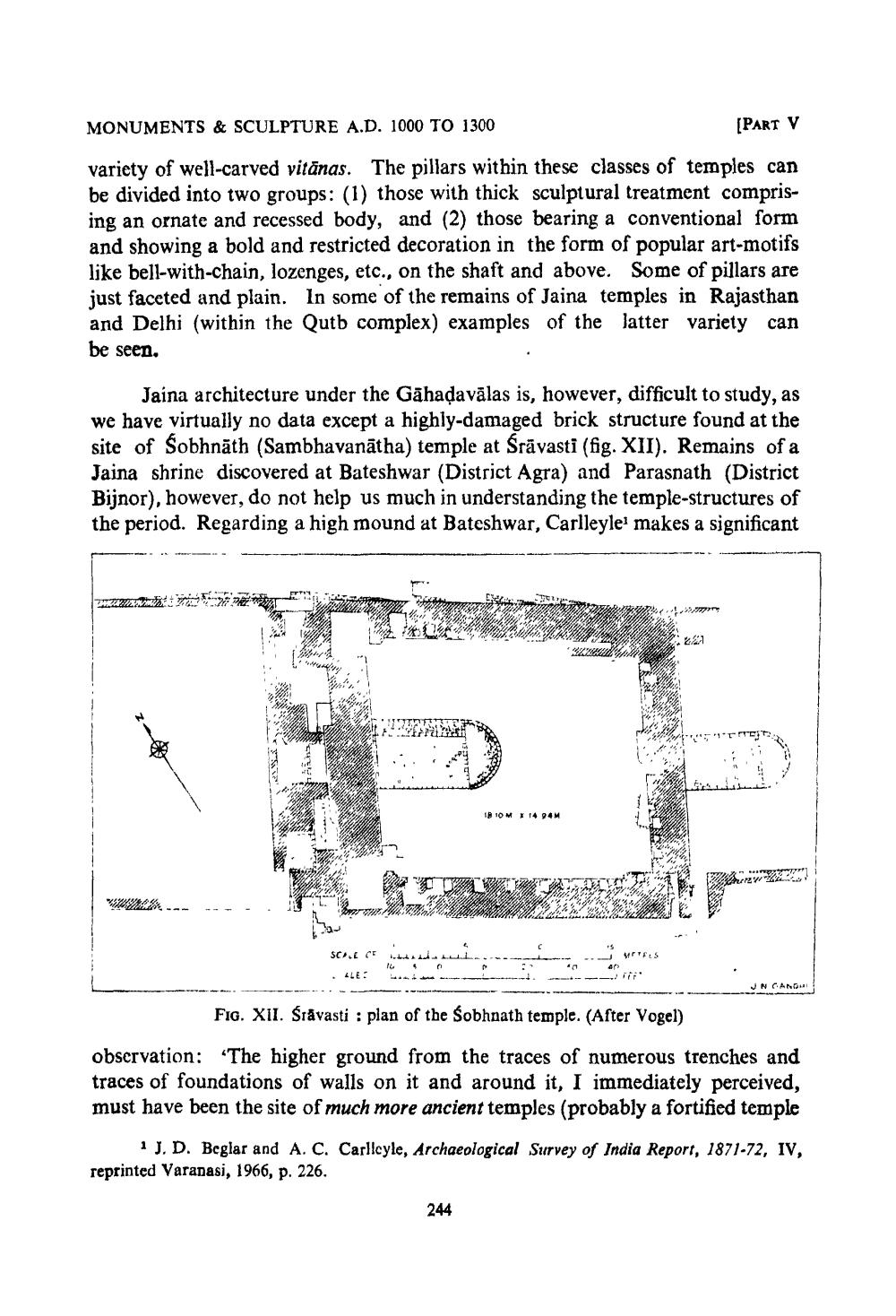________________
MONUMENTS & SCULPTURE A.D. 1000 TO 1300
[PART V variety of well-carved vitanas. The pillars within these classes of temples can be divided into two groups: those with thick sculptural treatment comprising an ornate and recessed body, and (2) those bearing a conventional form and showing a bold and restricted decoration in the form of popular art-motifs like bell-with-chain, lozenges, etc., on the shaft and above. Some of pillars are just faceted and plain. In some of the remains of Jaina temples in Rajasthan and Delhi (within the Qutb complex) examples of the latter variety can be seen.
Jaina architecture under the Gahaḍavālas is, however, difficult to study, as we have virtually no data except a highly-damaged brick structure found at the site of Sobhnath (Sambhavanatha) temple at Śrāvasti (fig. XII). Remains of a Jaina shrine discovered at Bateshwar (District Agra) and Parasnath (District Bijnor), however, do not help us much in understanding the temple-structures of the period. Regarding a high mound at Bateshwar, Carlleyle1 makes a significant
Tablets
---
SCALL CE ALE
18 10 M X 14 94M
www
244
MOTELS
*
150
AN
**************
N GANGHI
FIG. XII. Śrāvasti: plan of the Sobhnath temple. (After Vogel)
observation: 'The higher ground from the traces of numerous trenches and traces of foundations of walls on it and around it, I immediately perceived, must have been the site of much more ancient temples (probably a fortified temple
1 J. D. Beglar and A. C. Carllcyle, Archaeological Survey of India Report, 1871-72, IV, reprinted Varanasi, 1966, p. 226.




